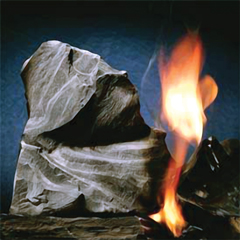|
Vol. 231 No. 8 |

|
|
PRAMOD KULKARNI, EDITOR
|
From shale gas to shale oil to oil shale
Extracting natural gas from fractured shale source rock has now become conventional. The next frontier appears to be oil from shale, first from mobile saturations of mature oil, and in due time, from immature kerogen embedded in shale rock. The transition from shale gas to shale oil is driven by economics. As there is now more than a triple price advantage in favor of producing oil, some of the shale gas operators are shifting their exploration and production operations to the oil windows of the Bakken, Eagle Ford and Barnett Shale plays. Since the technology of drilling long laterals and multistage fracturing is suitable for oil as well as natural gas, the transition is relatively easy to accomplish.
Horn River oil. Oil plays in the Bakken and Eagle Ford are well known. An upcoming oil shale play is emerging in the Horn River Basin of British Colombia, Canada. Fort Worth, Texas-based Quicksilver Resources announced in mid-July its discovery of an 80-ft section of a mature oil window in Horn River play. The discovery was made in the Bakken-Exshaw section of the Devonian Muskwa and Klua shales at about 4,000-ft depth.
Oil from kerogen. Before the advent of the US shale plays, “shale oil” typically referred to kerogen embedded in sedimentary rock. Such immature hydrocarbon deposits are found extensively in the Western US as well as throughout the world from Scotland to Eastern Europe, Jordan, China and Australia. Kerogen consists of carbon compounds trapped in sedimentary rock as a result of plant and animal matter decay over geologic time. When heated under pressure in the Earth’s crust within a temperature range of 140°F to 320°F, the kerogen will eventually release crude oil. Natural gas is released if the temperature is above 392°F. Crude oil can be extracted from kerogen by doing the Earth work on the surface in a retort or through in situ heating using downhole heating elements. Both of these processes are expensive as well as energy intensive, and become economical only at high crude oil prices.
 |
Fig. 1. Oil shale rock is easy to burn. But commercial oil production is far more elusive. Courtesy of Rand Corp.
|
|
USGS assessments. The reason oil from kerogen comes under discussion is the enormous resource potential. In June, the US Geological Service (USGS) released its reassessment of oil-in-place shale resources in the Eocene Green River Formation in the Uinta Basin in the states of Utah and Colorado. The assessment provides oil-yield values in gallons per ton based on extensive surface and core samples and oil and gas tests. As a result of these assessments, the USGS has estimated a total of 1.32 trillion barrels of oil in place in 18 Green River shale zones. Based on a similar assessment, the USGS has estimated oil-in-place resource in the federally held portion of the Piceance Basin in Colorado at 1.027 trillion barrels.
Historical starts and stops. Oil shale mining competed with drilling for oil at the turn of the century. In Scotland, 1–4 million tonnes of shale was mined each year from 1881 to 1955, after which production began its decline and ended in 1962. Shale mining is taking place in Estonia as a feedstock for power plants, and oil shale is being produced in Liaoning, China. In the Western US, there is evidence of shale rock being used for energy for more than 600 years. The first “oil shale boom” took place during 1917–1925 when 30,000 oil shale mining claims were filed in the Piceance Basin. Since then, numerous projects have started up, achieved initial success, but failed to establish commercial production. For example, the US government abolished a synthetic liquid fuels program in 1985 after spending $8 billion over 40 years.
Mahogany research project. One of the remaining active shale oil pilot projects was established by Shell over 25 years ago. For its Mahogany research project in Rio Blanco County, Colorado, Shell is using a patented in situ conversion process. Heater holes were drilled to a depth of 2,000 ft to heat the shale rock formation to 650°F–750°F. The heat converts the kerogen in the oil shale into about one-third gas and two-thirds light oil. Conventional producer wells are used to bring the oil and gas to the surface. Shell has successfully recovered 1,700 bbl of light oil and associated gas, thus proving the technology. Research is continuing at Mahogany, and a decision about commercial production will be made by 2015.
Political resistance. Besides the technological hurdles, shale oil development is handicapped by resistance from environmental groups and the Obama administration. Days after he took office, President Barack Obama’s Department of the Interior revoked leases on public lands that were meant for shale research and development. The reason for cancelling the leases was low royalty rates for the large tracts.
Microwave process. The absence of commercial production in the face of enormous potential is continuing to inspire entrepreneurs to suggest out-of-the-box concepts for oil shale development. On July 8, Global Resource Corp., a North Carolina-based developer of microwave technologies, announced positive findings on its test to extract liquid hydrocarbons from Australian oil shale. Global Resources subjected several crushed and sieved samples of the shale rock to high-frequency microwave energy in order to produce oil and gas. Global Resources claims that crude oil could be produced using electricity costing less than $5/bbl.
Future development. Commercial production of mobile oil saturations in shale is already underway. The conversion of kerogen into oil and gas is a much more elusive undertaking. We may have to wait several years and even decades for technology development and a more supportive political climate that fosters oil shale production. 
|




